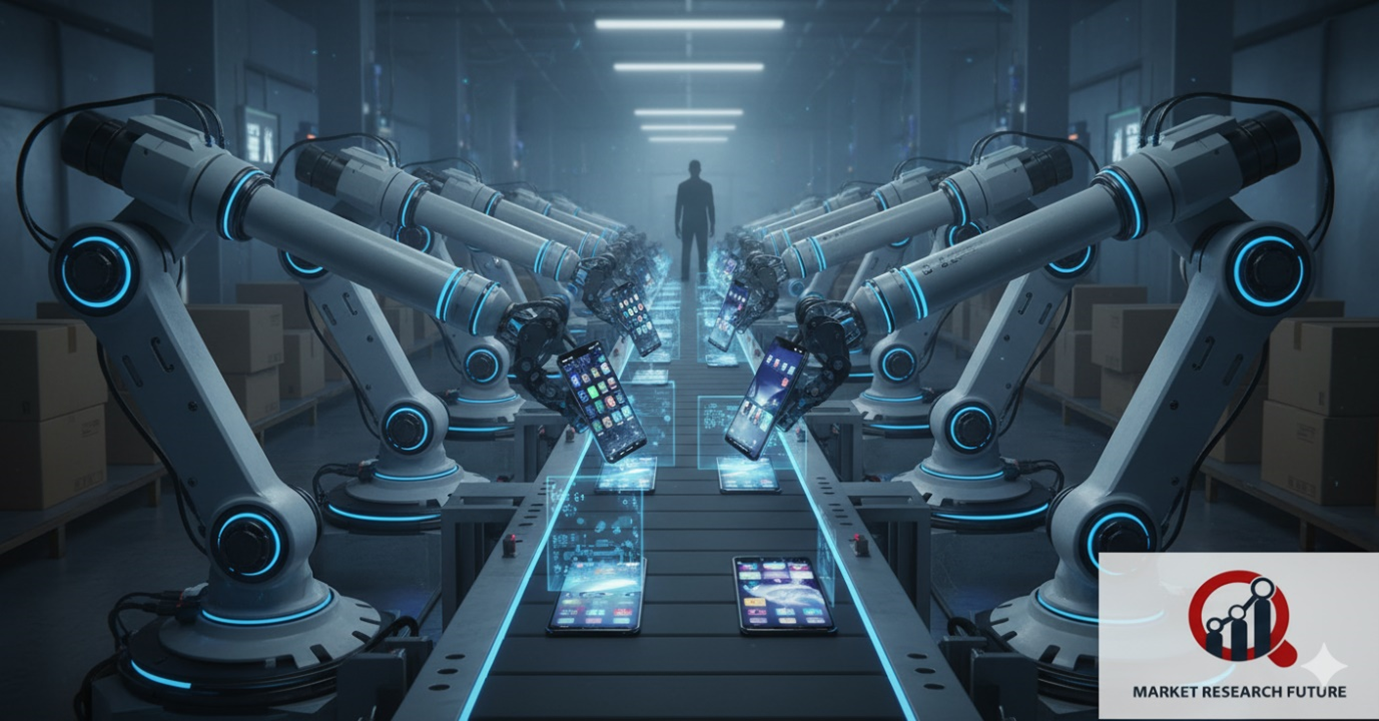
Robotic Process Automation Industry
Industrialization has been the driving force behind progress for a long time, and automation is what keeps it going. Automation has become a part of every step of manufacturing, from aerospace to cars to electronics. Robotic Process Automation (RPA) is the start of a new era of change. In this era, smart software, sensors, and robots do repetitive, rule-based tasks with much more accuracy than humans can.
RPA has become a quiet but powerful force in the smartphone manufacturing business. Making sleek, compact, and high-performance smartphones requires precision engineering that is almost impossible to do by hand. Smartphones today have powerful microchips, advanced processors, and complex circuits. To make them, you need manufacturing methods that can work at the level of individual atoms. RPA lets manufacturers keep this level of accuracy all the time by combining hardware, algorithms, and control systems to create perfect designs that meet the needs of more and more customers.
Economies of Scale
China, South Korea, and Japan are some of the countries that are leading the way in making smartphones in the Asia-Pacific region. The region is adopting robotics and automation more quickly because of the growing demand for high-tech smartphones and the need to make production more efficient.
It's no longer possible for human hands to fit millions of tiny parts into devices that are thinner than ever before. Robots now run most of the work on production floors, cutting, assembling, soldering, and inspecting things faster and more accurately than humans ever could. These automated systems never get tired, never make mistakes, and make sure that every part meets exact specifications. By doing this, they let manufacturers increase production without sacrificing quality, which changes what efficiency means in the age of hyper-automation.
Different kinds of products
RPA has also changed the variety of smartphone designs. There are many different types of robots today, such as Cartesian and SCARA robots, 6-axis and dual-arm systems, and each one is made for a specific job. For example, Cartesian robots are great at cutting and micro-assembly, while dual-arm robots can place parts in a way that is similar to how people do it.
Automation lets manufacturers come up with new ideas quickly as design aesthetics become more important to consumers. This robotic accuracy has led to the rise of full-screen, curved-edge, and foldable smartphones. Top brands are now trying out designs that are ahead of their time and push the limits of engineering. This is only possible because automated production lines work perfectly.
Growth of the Market
It's not just about speed when it comes to robotic process automation; it's also about making smart choices. Modern RPA systems, which use AI and machine learning, can find problems, make workflows more efficient, and even fix themselves without any help from people. Manufacturers who used to check quality by hand are now seeing huge improvements in speed, consistency, and accuracy.
Companies all over the world are starting to understand that automation doesn't just cut down on mistakes made by people; it changes the whole production system. Because automated factories are so efficient, tasks that used to be outsourced to save money on labor are now being brought back to the US. The rise of "smart factories" is making it possible for improvements to happen all the time based on data, which leads to a cycle of productivity and new ideas.
Replacing People with Robots
The use of RPA in making smartphones has sparked a heated debate: Are robots taking over jobs? Yes, in a lot of ways. More and more, factories are using robots to do jobs that are boring, dangerous, or need superhuman accuracy. Now, robots with sensors, AI, and real-time analytics can put things together more quickly than any person could.
The biggest companies are slowly automating their production lines. This makes them less reliant on people and increases output and consistency. The reason is clear: robots don't need breaks, benefits, or training, and they do every job perfectly. But this change comes with some problems. As robots take over, people worry more about losing their jobs and the gap between the rich and the poor. Governments and economists are telling businesses to find a balance between using automation to get rid of people and using it to make people more capable.
There's no doubt that robots will make smartphones in the future. The combination of RPA, AI, and advanced analytics is the start of a new industrial revolution. This revolution will bring accuracy and new ideas, but it will also require ethical foresight. The argument goes on: will robots take over completely, or will people learn to work with and control robots? There is no going back now that the age of automation has begun.